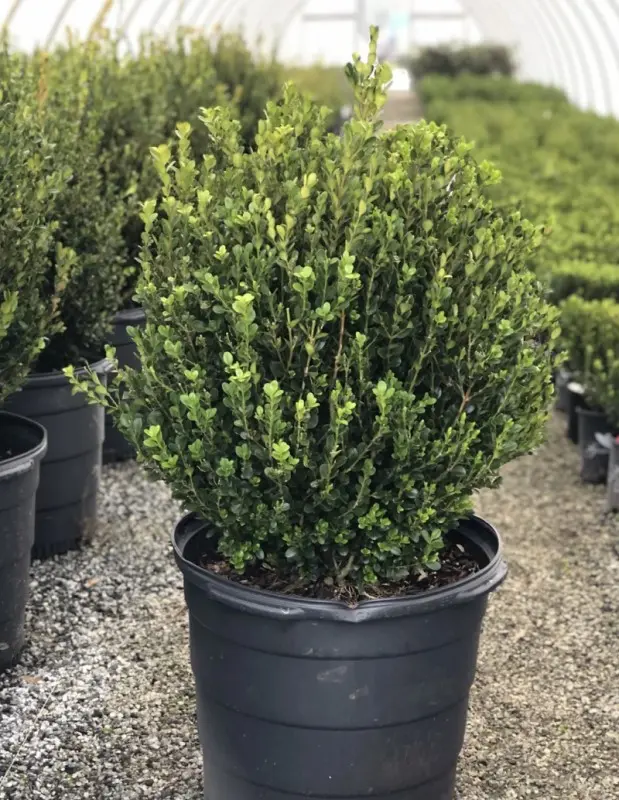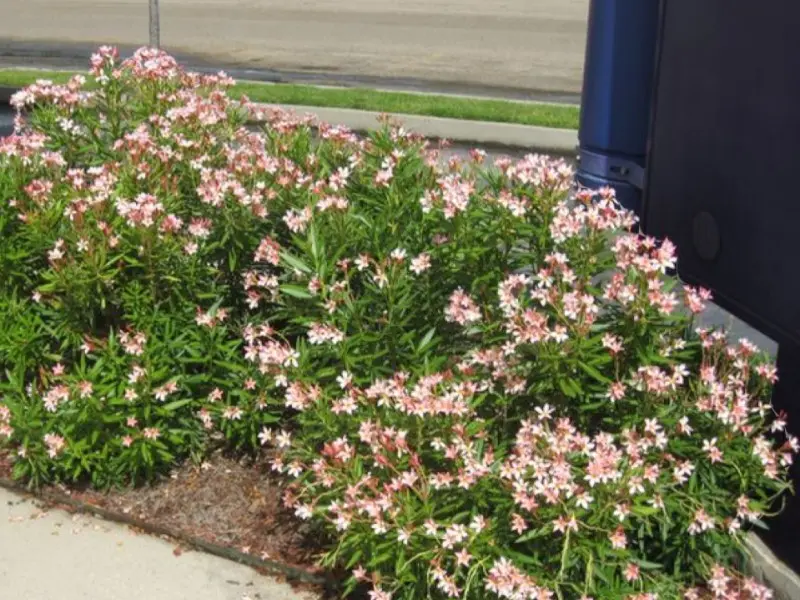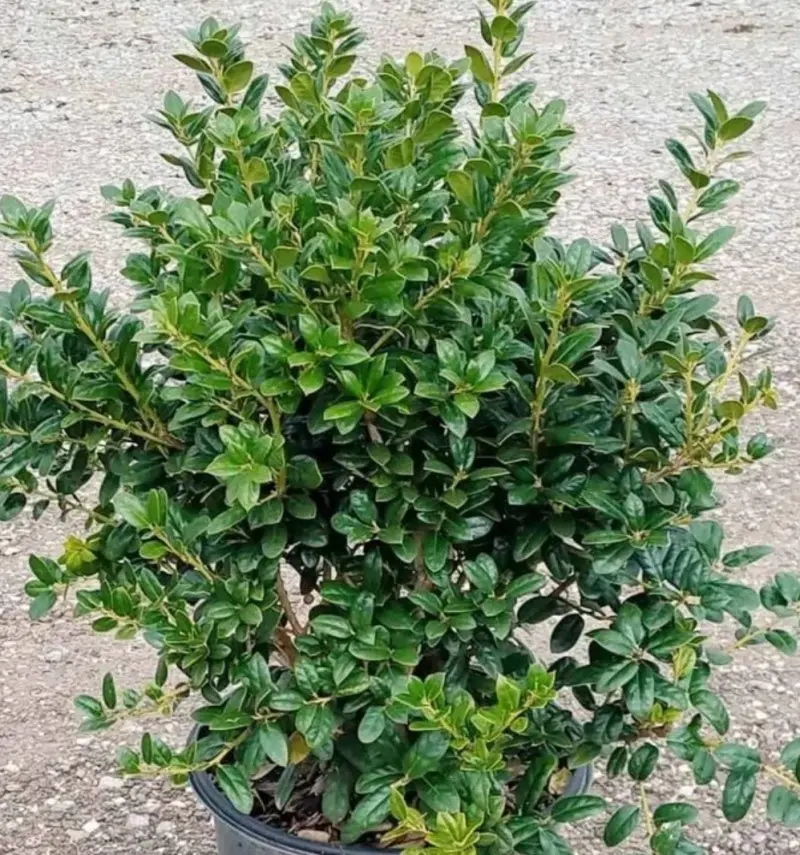Description
Japanese Boxwood (Buxus microphylla var. japonica) is a hardy, evergreen shrub known for its compact, rounded form and small, glossy green leaves. Native to Japan, this boxwood variety is a popular choice for low hedges, topiaries, and foundation plantings due to its ability to maintain a neat shape and dense foliage throughout the year. Unlike some other boxwoods, Japanese Boxwood is highly adaptable to warmer climates and is known for being resistant to boxwood blight, making it a favorite in various landscapes.
Typically growing 3 to 5 feet in height and width, Japanese Boxwood has a naturally mounding form that can be easily pruned to suit a variety of shapes. It thrives in full sun to partial shade and is hardy in USDA zones 6-9. This shrub prefers well-draining soil and has moderate drought tolerance once established, though it benefits from regular watering in dry periods.
Low-maintenance and versatile, Japanese Boxwood requires occasional trimming to maintain its shape, especially when used as a hedge or in formal garden designs. Its tolerance for pruning and slow growth rate make it ideal for creating clean lines and defined edges in garden borders. Japanese Boxwood’s evergreen foliage and adaptability to different garden styles make it a classic choice for adding structure and year-round greenery to landscapes.






